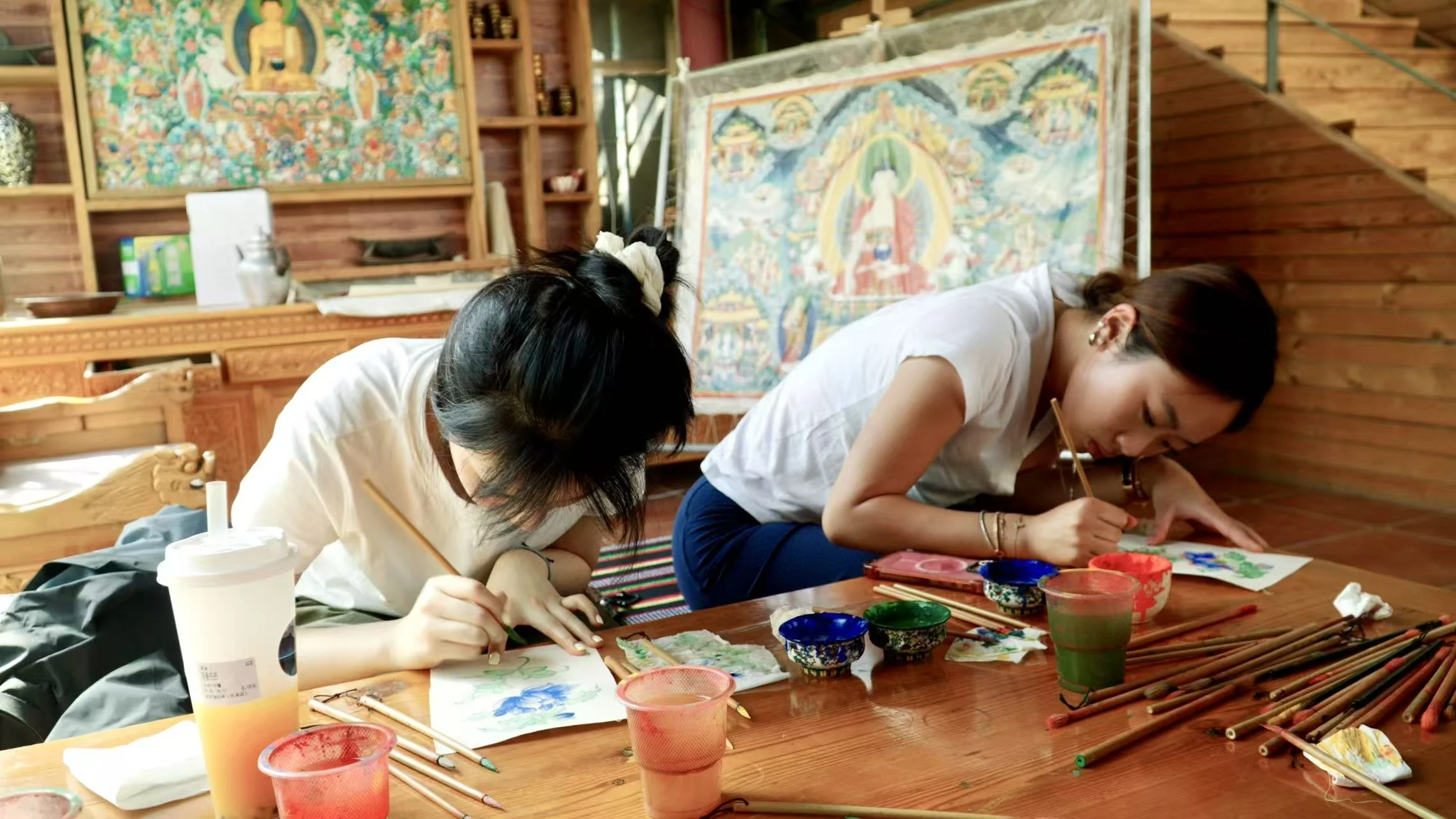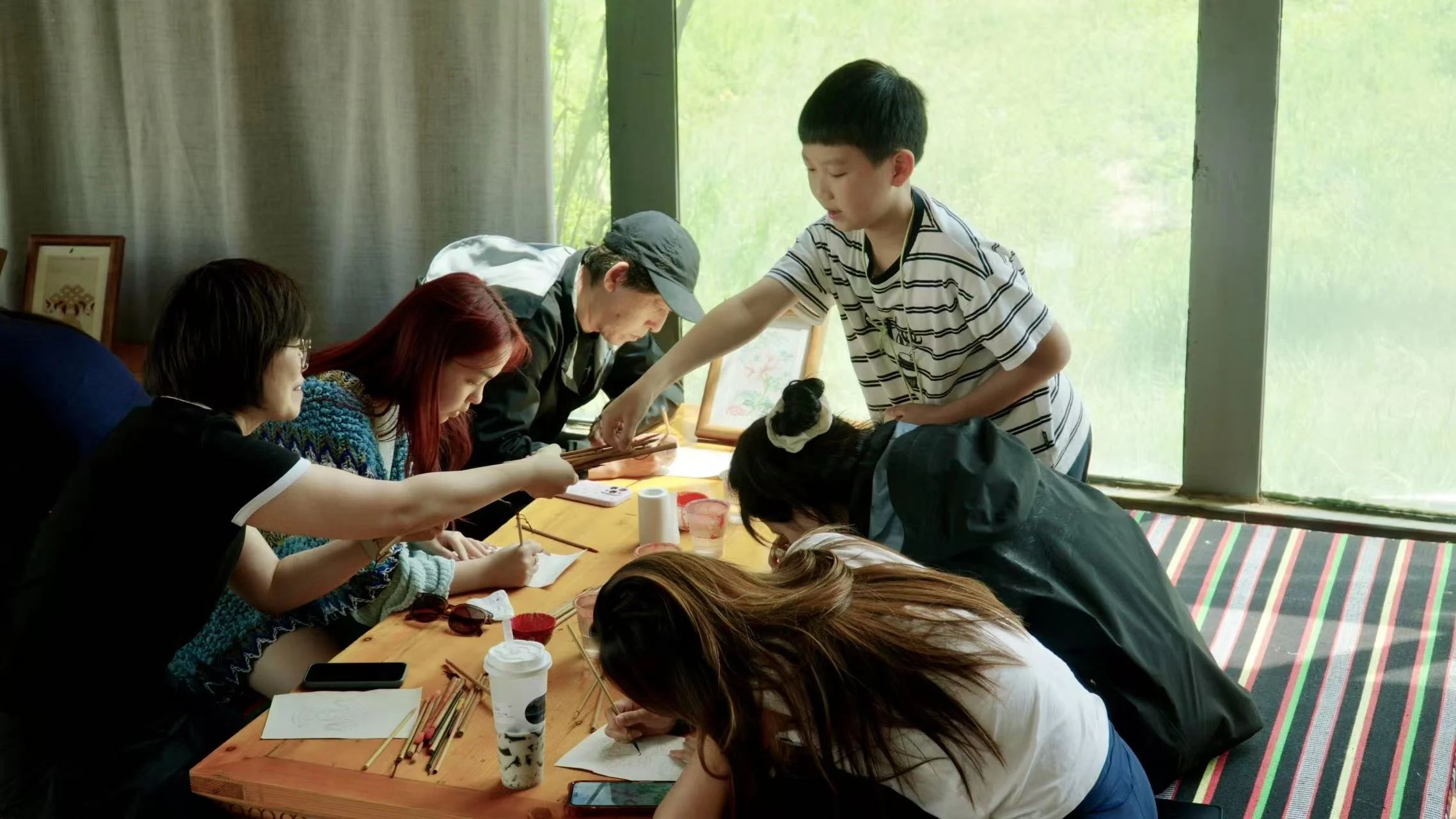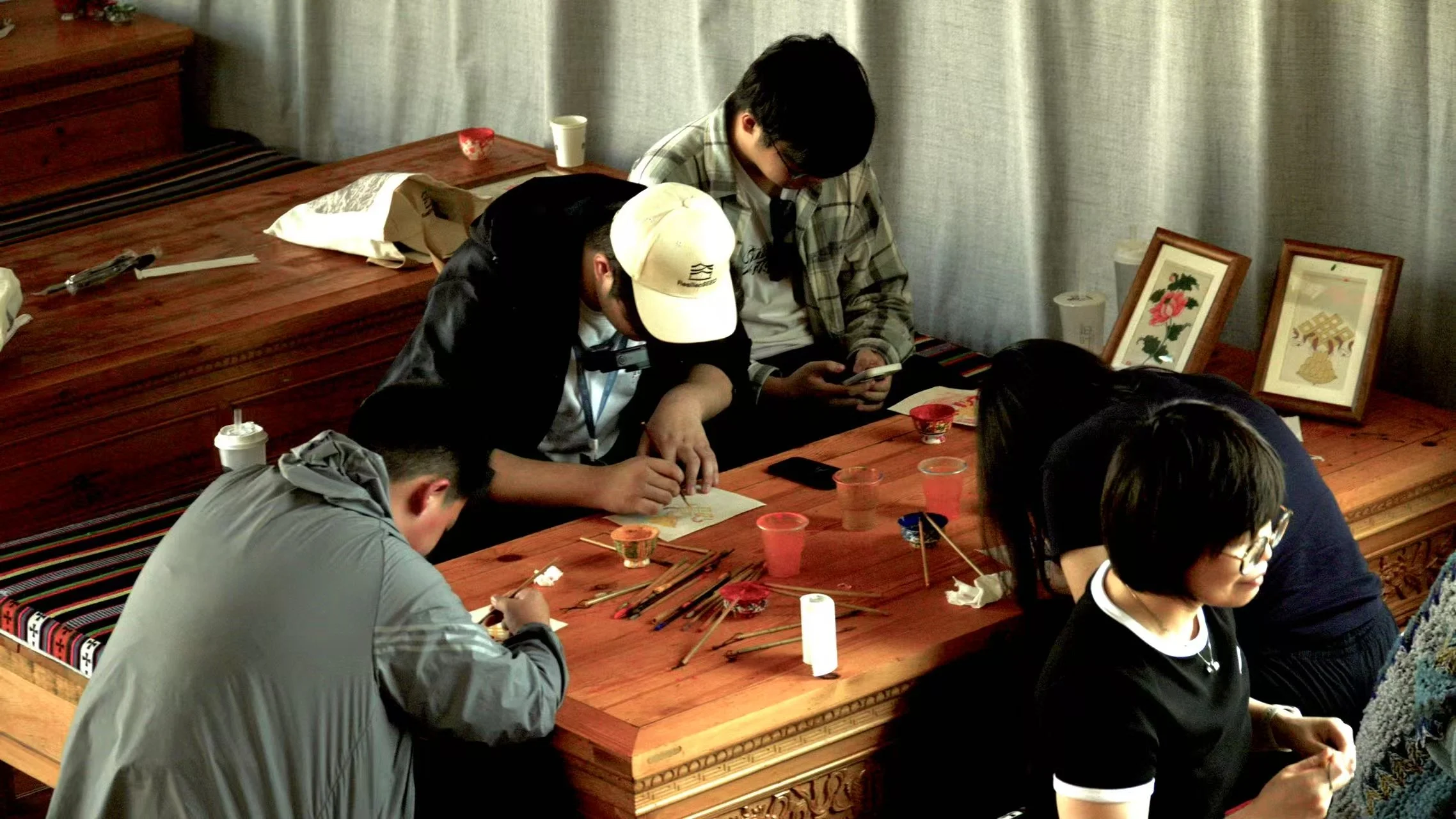Exploring Art and Culture: Thangka Painting
Beyond ecology and science, our summer research program is also about understanding culture and artistic expression. In addition to planting Saxaul trees and harvesting Cistanche, students immersed themselves in a Thangka (唐卡) painting lesson, an art form deeply rooted in Tibetan culture and spirituality.
What is Thangka?
Thangka is a traditional Tibetan scroll painting that blends religious symbolism, storytelling, and artistic craftsmanship. Each piece is painted by hand on cotton or silk, using mineral pigments in vibrant colors. These artworks are not just decorative, they carry spiritual meaning, often depicting Buddhist deities, mandalas, and scenes of harmony between humans and nature.
A Lesson in Patience and Precision
Under the guidance of a skilled local artist, our students learned the fundamental techniques of Thangka painting—from preparing the canvas to outlining sacred geometries and applying natural pigments. This process required focus, patience, and respect for tradition.
For many students, this was their first time engaging with an art form so closely tied to cultural identity and philosophy. The lesson sparked conversations about how art can reflect ecological values, reinforcing the idea that restoring the land is not only a scientific challenge but also a cultural one.




